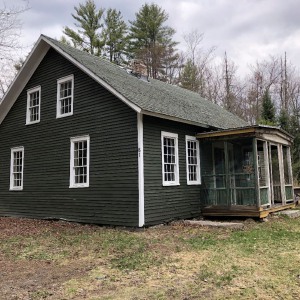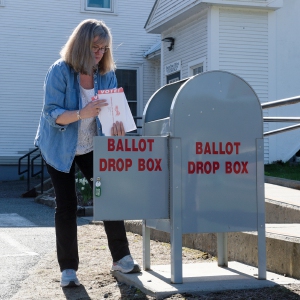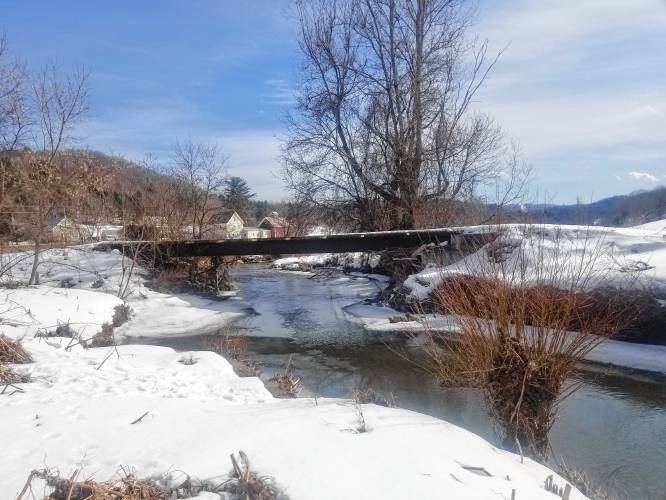A Solitary Walker: Restoring the health of our once-wild rivers
| Published: 03-08-2024 4:48 PM |
The people in the Ompompanoosuc valley used to love their river — good fresh water for gardens and drinking, and a beautiful thing to look upon, but then she changed. She became faster and stronger and destroyed the things people built, who then decided the flooding had to stop and tried to tame her, riprap her banks, levee her sides, and straighten out those winding meanders. But she just got worse. And then the rain got heavier.
A full crowd gathered in Barrett Hall in South Strafford last week to learn from two Vermont river scientists about healthy rivers, what they look like and why they matter. They showed us what European settlers had done to our wild, beaver-filled, deeply forested, spread-out wetlands to turn them into the fast and deep beasts that they have become.
Watershed scientists, Rudi Rudell, who works with the White River Partnership and Eric Donaldson, a fluvial geomorphologist with the California-based company Balance Hydrologics who lives in Strafford, agreed to give a talk to the community on the topic of healthy rivers. Our Conservation Commission asked them after seeing 19th-century practices still in use on our river, the West Branch of the Ompompanoosuc. Those practices were from a time when state laws demanded landowners straighten their stretch of river and pull out fallen trees, or else their neighbor could do it for them. And any river animal that had the misfortune of wearable fur would be trapped to extirpation.
We learned that Europeans first encountered rivers that were so strewn with downed trees, boulders and beaver dams, they could barely be waded, let alone allow logs or canoes to pass. So, the settlers tidied things up, made the rivers navigable, clean and straight. And while doing so, cut down the trees in the forest floodplains and up in the hills for lumber, and later, for sheep, so when the rains came, the rivers flowed fast, carrying soil, eroding the banks, covering the fields with silt. As the rivers cut deeper, they lost contact with their floodplains — their escape routes, now mostly hayfields, but a couple hundred years ago, riparian forests that acted like sponges, absorbing floodwaters. Our hayfield floodplains hold immense amounts of silt and water too, as we witness during floods, when those fields fill up quickly when the river rises.
But all is not lost. As Rudi and Eric said, we are learning, and changing. The ancient rivers our ancestors first met were complicated, with shallow riffles and deep pools and meanderings all over the place in multiple channels. The best way we can tame our rivers now is to allow beavers to return. Beavers create multi-thread channels with permeable dams that slow the river yet allow sediments to pass through. Even fish can wiggle through the spaces. Those trees that grow along riverbanks, they’ve been hanging out with beavers for thousands of years and are masters of stump sprouting. For them, being chewed off by a beaver is a little like getting a much-needed haircut. When beaver dams threaten roads, there are baffles that can be installed to lower the water level.
We can plant trees along the wide river corridor, for they shade the water, cooling it, holding the soil in place during floods, creating habitat, and eventually falling into the river, providing nutrients, and slowing the water down. Losing a few bales of hay now for tree planting might mean protecting our hayfields from washing away in the future. Unless a fallen tree is clogging a bridge or culvert, we can let it be.
We had a mini cyclone in Strafford a few years ago that twisted and toppled many trees into the river. Unfortunately, they were thought of as a threat rather than a blessing and were often removed. We can build our bridges and culverts wide enough not to constrict the river, causing an eroding chute below and sediment build up above.
Rudi said we learned a lesson after Irene and have done a better job with infrastructure. Flooding is expensive. Restoring our ancestral wetlands will be too, but will reward us with fewer floods in the future. Perhaps when our river returns to the messy, wild one she used to be, we will love her again.
Article continues after...
Yesterday's Most Read Articles
 Dartmouth administration faces fierce criticism over protest arrests
Dartmouth administration faces fierce criticism over protest arrests
 Hanover house added to New Hampshire Register of Historic Places
Hanover house added to New Hampshire Register of Historic Places
 Sharon voters turn back proposal to renovate school
Sharon voters turn back proposal to renovate school
Micki Colbeck, of Strafford, is a naturalist and writer and chair of the Strafford Conservation Commission. Write to her at mjcolbeck@gmail.com.



 Editorial: Response to campus protests only adds fuel to the fire
Editorial: Response to campus protests only adds fuel to the fire Editorial: Chris Sununu’s moral vacuum
Editorial: Chris Sununu’s moral vacuum Editorial: Gambling tarnishes America’s sporting life
Editorial: Gambling tarnishes America’s sporting life By the Way: A white nationalist’s many mistruths
By the Way: A white nationalist’s many mistruths
